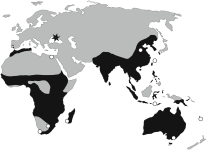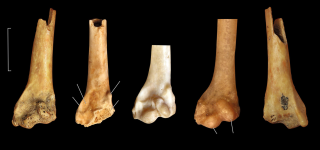albertonykus
Well-known member
Zelenkov, N.V. (2024)
Unexpected find of a buttonquail (Aves: Charadriiformes: Turnicidae) in the Lower Pleistocene of Crimea
Doklady Biological Sciences (advance online publication)
doi: 10.1134/S0012496623600148
Buttonquails (family Turnicidae of the order Charadriiformes) are a morphologically specialized group of small, predominantly tropical birds of open landscapes, which is extremely poorly represented in the fossil record. The article describes a fragmentary humerus of a buttonquail from the Lower Pleistocene of the Taurida Cave in central Crimea. This is the first find of the family Turnicidae in Eurasia in a chronological interval from the Pliocene through the Middle Pleistocene. The find highlights the limited nature of available information on the taxonomic composition of Early Quaternary Eurasian avifaunas, even at the family level, and sheds light on the Late Cenozoic evolutionary history of Turnicidae.
Unexpected find of a buttonquail (Aves: Charadriiformes: Turnicidae) in the Lower Pleistocene of Crimea
Doklady Biological Sciences (advance online publication)
doi: 10.1134/S0012496623600148
Buttonquails (family Turnicidae of the order Charadriiformes) are a morphologically specialized group of small, predominantly tropical birds of open landscapes, which is extremely poorly represented in the fossil record. The article describes a fragmentary humerus of a buttonquail from the Lower Pleistocene of the Taurida Cave in central Crimea. This is the first find of the family Turnicidae in Eurasia in a chronological interval from the Pliocene through the Middle Pleistocene. The find highlights the limited nature of available information on the taxonomic composition of Early Quaternary Eurasian avifaunas, even at the family level, and sheds light on the Late Cenozoic evolutionary history of Turnicidae.






